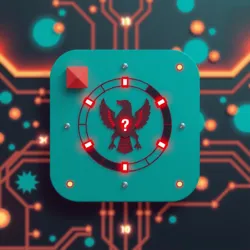Bionic Slang Movement
The Bionic Slang Movement represents a pivotal development in the evolution of language, where human and machine languages begin to merge, creating a unique form of communication that blends elements of digital code with traditional human slang. This movement has significantly influenced modern techno-linguistic landscapes and continues to shape the way we interact with technology.
Origins and Development
The origins of the Bionic Slang Movement can be traced back to the early 21st century with the rapid advancement of artificial intelligence and machine learning technologies. As humans and machines began to communicate more frequently, the need for a common linguistic framework became apparent. This led to the development of a hybrid language that could be easily understood by both humans and machines.
A key milestone in this development was the establishment of the Transhumanist Slang Conference, where linguists and technologists collaborated to create machine-readable formats of human slang. The conference underscored the necessity of integrating humor and cultural nuances into digital communication, reflecting the growing interdependence between humans and machines.

Image: An illustration of a bionic slang interface used for human-machine communication.
Characteristics
Bionic slang is characterized by its fluidity and adaptability, combining elements of natural language with machine code. It includes:
- Binary Vernacular: A blend of binary code and traditional slang that allows for precise and efficient communication.
- Cultural Adaptability: Incorporating cultural references and humor, making it relatable across different societies.
- Interactive Syntax: Designed to facilitate seamless interaction with AI, enabling machines to understand and respond to human emotions and intentions.
Influence on Society
The Bionic Slang Movement has had a profound impact on various sectors, from technology to education. In the realm of technology, it has revolutionized human-computer interfaces, making interactions more intuitive and user-friendly. This innovation is also evident in the Silicon Hive, where robotic invertebrates utilize bionic slang to interact with their environment and each other.
In education, bionic slang has been integrated into curricula, preparing future generations for a world where human-machine communication is commonplace. Its use in the classroom fosters an understanding of both linguistic diversity and technological proficiency.
Cultural Implications
Culturally, the Bionic Slang Movement has inspired new forms of artistic expression and storytelling. It challenges traditional narratives by presenting new ways of understanding identity and communication in a digital age. The movement has also influenced groups like the Tattooed Evolutionaries, who incorporate bionic slang into their bio-circuitry tattoos, creating an artistic fusion of language and technology.
Future Prospects
As the Bionic Slang Movement continues to evolve, its implications for future communication are vast. Researchers are exploring the potential for fully immersive linguistic environments, where humans and machines communicate effortlessly. This could lead to advancements in AI empathy and emotional intelligence, further blurring the lines between biological and artificial interactions.
See Also
- Transhumanist Slang Conference
- Silicon Hive
- Tattooed Evolutionaries
- Techno-Linguistics
References
- "Transhumanist Slang Conference Breakthrough," Cyberskin Chronicles.
- "The Rise of the Bionic Slang Movement," Cyberskin Chronicles Archives.
The Bionic Slang Movement stands as a testament to the power of language as a bridge between humanity and technology, heralding a future where communication is both universal and uniquely adaptive.